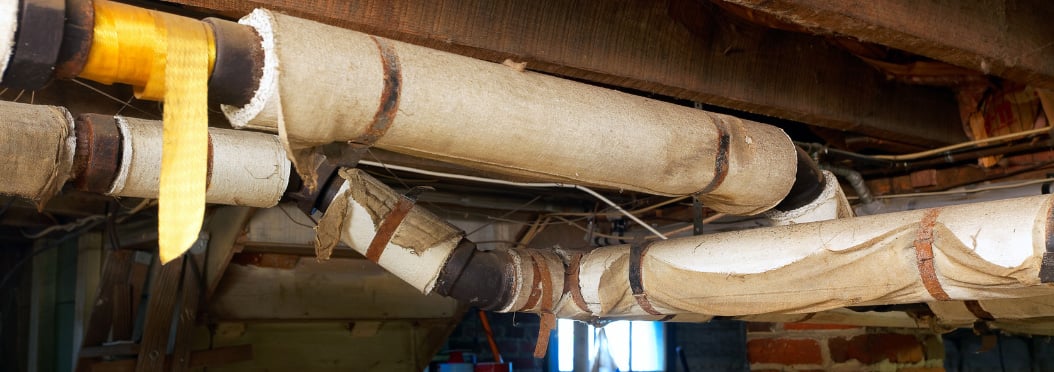Hazardous building material inspections?
Need to know if your building site has toxic, flammable, corrosive, or reactive material?
Ensure Safety and Compliance find a hazardous material inspection specialist on our platform.
A hazardous material inspection in the building industry is a comprehensive assessment conducted to identify, evaluate, and manage hazardous substances present in buildings or construction sites. Hazardous materials refer to substances that pose a risk to human health, property, or the environment due to their toxic, flammable, corrosive, or reactive nature.
Need a Hazardous Material Inspection?

Here are some key points about hazardous material inspections in the building industry:
The primary objective of a hazardous material inspection is to identify and assess the presence of hazardous substances in a building or construction site. This includes materials such as asbestos, lead-based paint, polychlorinated biphenyls (PCBs), mercury, solvents, mold, and other potentially harmful substances.
Regulatory Compliance: Hazardous material inspections are often required to comply with local, state, and national regulations and standards. These regulations aim to ensure the safety and well-being of workers, occupants, and the environment.
Qualified Inspectors: Hazardous material inspections should be conducted by qualified professionals who possess the necessary expertise, certifications, and knowledge of hazardous substances. They follow established protocols and guidelines to identify and assess hazardous materials accurately.
Building Surveys: Inspectors conduct visual surveys and may collect samples for laboratory analysis to determine the presence and concentration of hazardous substances. These surveys involve thorough examinations of various building components, including construction materials, paints, coatings, electrical equipment, plumbing systems, insulation, and more.
Assessment and Documentation: Inspectors assess the condition, quantity, and location of hazardous materials within the building or construction site. They document their findings in a detailed report, which includes information on the identified substances, their potential risks, and recommended management or remediation strategies.
Risk Management: Hazardous material inspections help building owners, contractors, and stakeholders develop appropriate risk management plans. These plans involve implementing control measures, such as containment, removal, encapsulation, or monitoring, to minimize the risks associated with the identified hazardous substances.
Worker and Occupant Safety: By identifying and managing hazardous materials, inspections contribute to the safety and well-being of workers and occupants. It helps prevent exposure to harmful substances and reduces the potential for health issues or accidents related to hazardous materials.
Ongoing Monitoring and Compliance: Hazardous material inspections may require periodic reassessment, particularly in buildings or sites with potential for changes or updates. Regular monitoring ensures ongoing compliance with regulations and helps address any emerging issues related to hazardous substances.It's important to note that the specific requirements and regulations for hazardous material inspections may vary depending on the jurisdiction and the nature of the building or construction project. Consulting with qualified professionals and adhering to applicable guidelines is crucial to ensure compliance and mitigate risks associated with hazardous materials in the building industry.
Hazardous material inspections in the building industry are necessary for several reasons:
Safety: Hazardous materials, such as asbestos, lead-based paint, or mold, can pose significant health risks to workers and occupants if not properly managed. Inspections help identify and mitigate these dangers, ensuring a safe environment.
Legal Compliance: Many jurisdictions have regulations and standards in place that require building owners and contractors to assess and manage hazardous materials. Inspections help ensure compliance with these laws, avoiding potential penalties or legal issues.
Risk Mitigation: Identifying and assessing hazardous materials allows for the development of appropriate risk management strategies. Controlling or removing these materials reduces the potential for accidents, health problems, and environmental contamination.
Occupant Health: Buildings with hazardous materials can adversely affect the health of occupants, leading to respiratory issues, allergies, or other illnesses. Inspections help identify and address these materials, safeguarding the well-being of those who live or work in the building.
Environmental Protection: Hazardous materials, if not handled properly, can contaminate soil, air, and water, posing risks to the surrounding environment. Inspections ensure the proper management and disposal of these materials, minimizing environmental harm.
Overall, hazardous material inspections are necessary to create a safe, healthy, and compliant environment within the building industry, protecting both individuals and the environment from the potential hazards associated with these materials.
Why Choose Us
Global network of qualified inspectors
Only professional outfits are registered on our platform. Vetted and screened, so you don't get any nasty surprises when selecting your quality control provider!

Remote (Guided) inspections
Our inspectors are capable of receiving remote instruction, and guidance during specialized inspections. Ensuring that we meet required specifications.

You control the timeline
You have control over the timeline including the quote deadline, the inspection date and the date of the report. Allowing your inspections to seamlessly integrate into your logistics.






